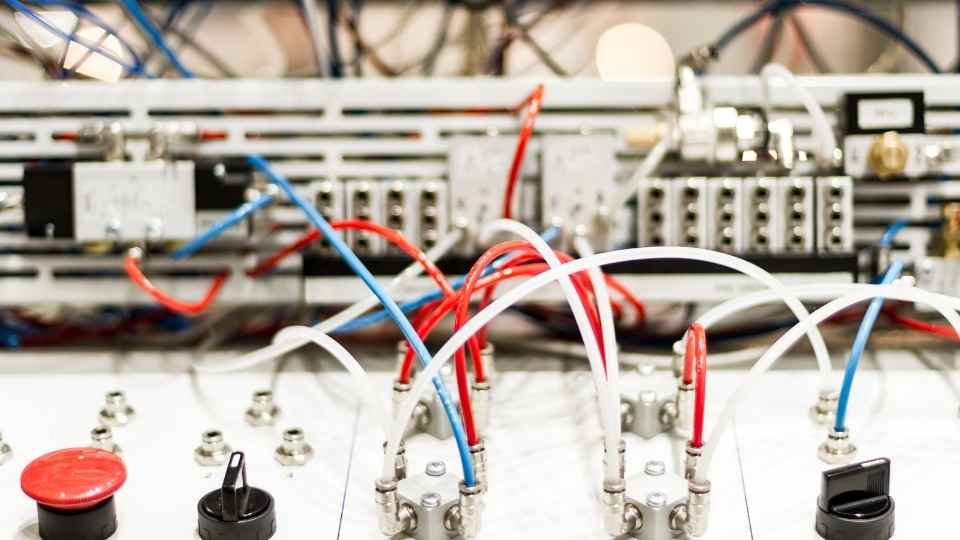
Delve into the domain of electronics with our comprehensive compilation of captivating beginner electronic kits.
From mastering breadboard basics to exploring LED experiments, this list promises an enthralling journey through the world of circuits and components.
Soldering projects for newbies will open doors to a realm of hands-on learning, while battery projects offer a fun and engaging experience.
Understanding resistors and capacitors will unravel the intricacies of electrical engineering.
Prepare for an illuminating adventure as we present must-try kits that empower your creative freedom in electronics exploration.
Key Takeaways
- Soldering projects for newbies include the SparkFun Beginner Soldering Kit and the Elenco Solder Practice Kit.
- Mastering breadboard basics is essential for understanding circuit design and component placement.
- LED experiments allow for hands-on experience with different lighting effects and circuit design.
- Battery projects, such as an LED flashlight or a remote-controlled car, enhance understanding of electronics and circuit design.
Soldering Projects for Newbies
When it comes to soldering projects for newbies, there are a variety of kits available that provide a great opportunity to learn and practice this essential skill.
Soldering is the process of joining two or more metal components using molten solder, which acts as a bonding agent. It requires precision and attention to detail to ensure strong and reliable connections.

For beginners looking to explore the world of soldering, starter kits such as the SparkFun Beginner Soldering Kit or Elenco Solder Practice Kit offer hands-on experience with step-by-step instructions and all necessary tools included.
These kits typically include simple circuits with through-hole components that allow beginners to practice proper soldering techniques while gaining familiarity with electronic components.
Mastering Breadboard Basics
To gain proficiency in working with a breadboard, it is essential to understand its fundamental principles and become skilled at connecting components without causing any short circuits. Here are four key principles to keep in mind:
Power Rails: Breadboards have two long rows called power rails that provide electric current to the connected components. The red rail is for positive voltage (VCC), while the blue rail is for ground (GND).
Rows and Columns: Each row and column on a breadboard is connected internally, allowing you to easily connect multiple components using the same electrical connection.
Component Placement: Components are inserted into the breadboard's holes, with their legs or wires spread across different rows or columns based on the desired circuit configuration.
Avoiding Short Circuits: Care must be taken when placing components to avoid accidental short circuits between adjacent rows or columns.

Understanding these basics will pave the way for exploring LED experiments and other exciting projects on a breadboard.
Exploring LED Experiments
LED experiments offer a valuable opportunity to apply the principles of working with a breadboard and explore the possibilities of creating different lighting effects.
LEDs, or Light Emitting Diodes, are electronic components that emit light when an electric current is applied. They are versatile and commonly used in various applications, from simple indicators to complex lighting systems.
By experimenting with LEDs on a breadboard, beginners can gain hands-on experience in circuit design, component placement, and understanding the behavior of different electrical elements. This practical knowledge sets the foundation for more advanced projects in electronics and allows individuals to unleash their creativity by designing unique lighting effects.
LED experiments provide an exciting platform for learning while fostering a sense of freedom to experiment with different ideas and configurations.
Moving forward, let's explore some fun battery projects that further enhance our understanding of electronics.
Fun With Battery Projects
Battery projects offer an engaging opportunity to explore the practical applications of electronics and further enhance our understanding of circuit design and component integration. These projects not only provide hands-on experience with electrical circuits but also allow for creativity and freedom in designing various electronic devices.

Here are four exciting battery projects that you can try:
LED Flashlight: Build a simple flashlight using a battery, switch, resistor, and LED. This project demonstrates the basics of circuitry by connecting components in series.
Solar Charger: Create a portable solar charger by combining a solar panel, rechargeable batteries, voltage regulator, and USB port. This project explores renewable energy sources while learning about charging circuits.
Doorbell Circuit: Construct your own doorbell using a battery, push button switch, capacitor, speaker, and transistor. This project delves into the principles of sound amplification and timing circuits.
Remote-Controlled Car: Design a small car powered by batteries with remote control capabilities using motors, transistors, resistors, capacitors, and wireless modules. This project combines electronics with mechanical engineering skills to create a fun and interactive device.
These battery projects will not only provide hours of enjoyment but also foster a deeper understanding of electronics principles while encouraging experimentation and innovation in circuit design.
Understanding Resistors and Capacitors
Resistors and capacitors play a crucial role in electronic circuits by regulating current flow and storing electrical energy, respectively.

Resistors are passive components that resist the flow of electric current, thereby controlling its magnitude. They are commonly used to limit current, divide voltages, and provide stability to circuits.
Capacitors, on the other hand, store electrical energy in an electric field generated between two conductive plates separated by a dielectric material. They can be charged and discharged, allowing them to store energy or release it quickly when needed. Capacitors are utilized for various purposes such as smoothing power supply voltages, filtering out unwanted frequencies, and timing circuit operations.
Understanding the properties and characteristics of resistors and capacitors is vital for designing and troubleshooting electronic circuits effectively. By mastering these fundamental components, individuals seeking freedom in electronics can unleash their creativity while building innovative projects.
Frequently Asked Questions
What Are Some Common Mistakes to Avoid When Soldering for Beginners?
When soldering for beginners, it is important to avoid common mistakes such as using too much or too little solder, applying excessive heat, not cleaning the components properly, and failing to secure the joints adequately.
How Can I Troubleshoot Common Issues When Working With Breadboards?
When troubleshooting common issues with breadboards, it is important to first check for loose connections and ensure proper alignment of components. Additionally, inspect for faulty components and consider using a multimeter to identify any electrical problems.
Are There Any Safety Precautions I Should Be Aware of When Working With Leds?
When working with LEDs, it is important to be aware of safety precautions. These include handling the components properly, using appropriate voltage levels, ensuring proper wiring and connections, and avoiding overloading the circuit.
Can I Use Rechargeable Batteries for the Battery Projects Mentioned in the Article?
Rechargeable batteries can be used for the battery projects mentioned in the article. However, it is important to ensure that the voltage and capacity of the rechargeable batteries are suitable for the specific project requirements.

How Do I Determine the Appropriate Resistor and Capacitor Values for My Electronic Projects?
To determine appropriate resistor and capacitor values for electronic projects, consult the project's specifications or refer to Ohm's law and the RC time constant formula. Researching component datasheets can also provide guidance on recommended values based on desired functionality.
 Basic Electronics ConceptsEssential ToolsCircuit Design BasicsMicrocontrollersDIY Electronics ProjectsRoboticsPrivacy PolicyTerms And Conditions
Basic Electronics ConceptsEssential ToolsCircuit Design BasicsMicrocontrollersDIY Electronics ProjectsRoboticsPrivacy PolicyTerms And Conditions
